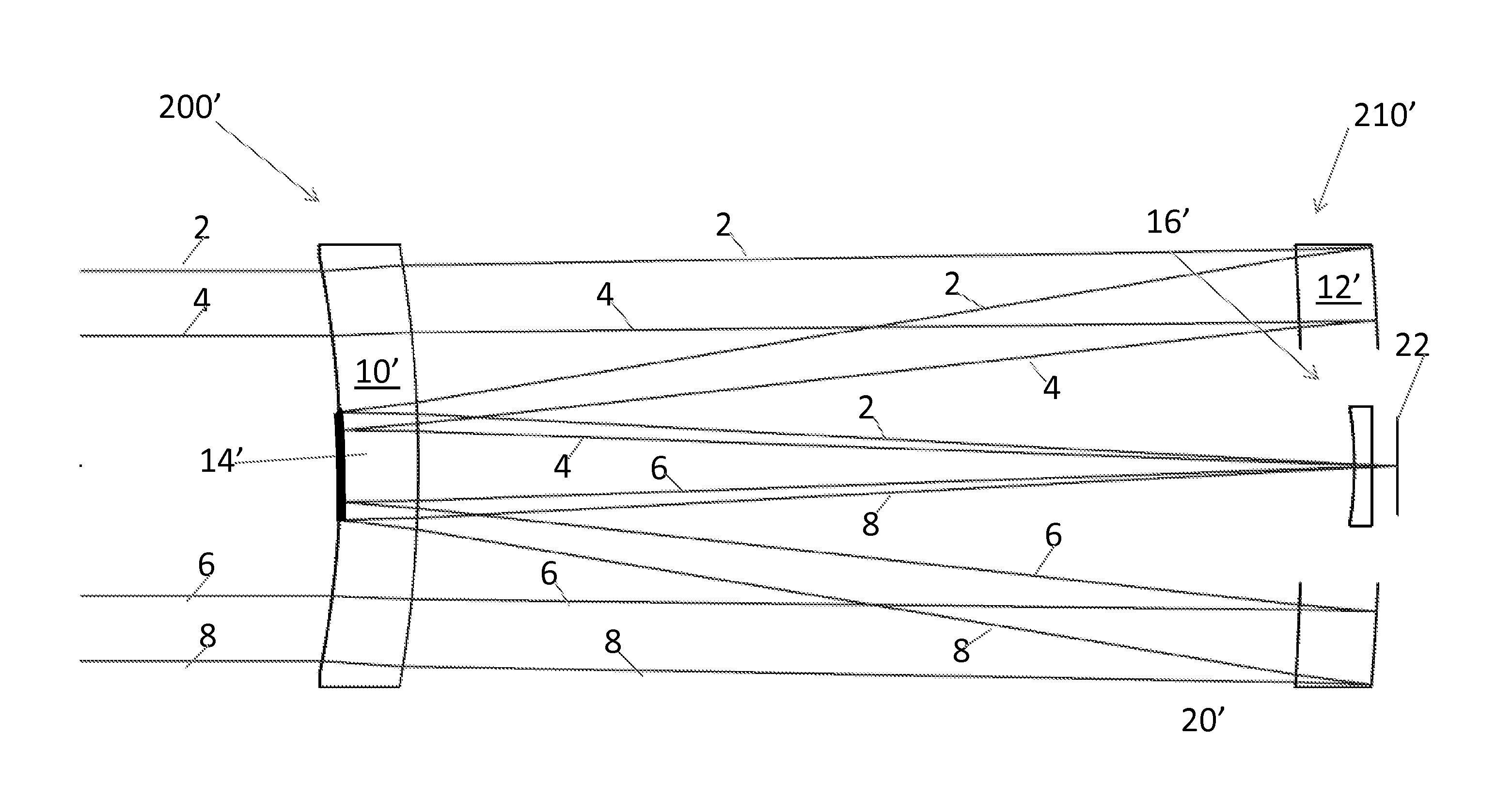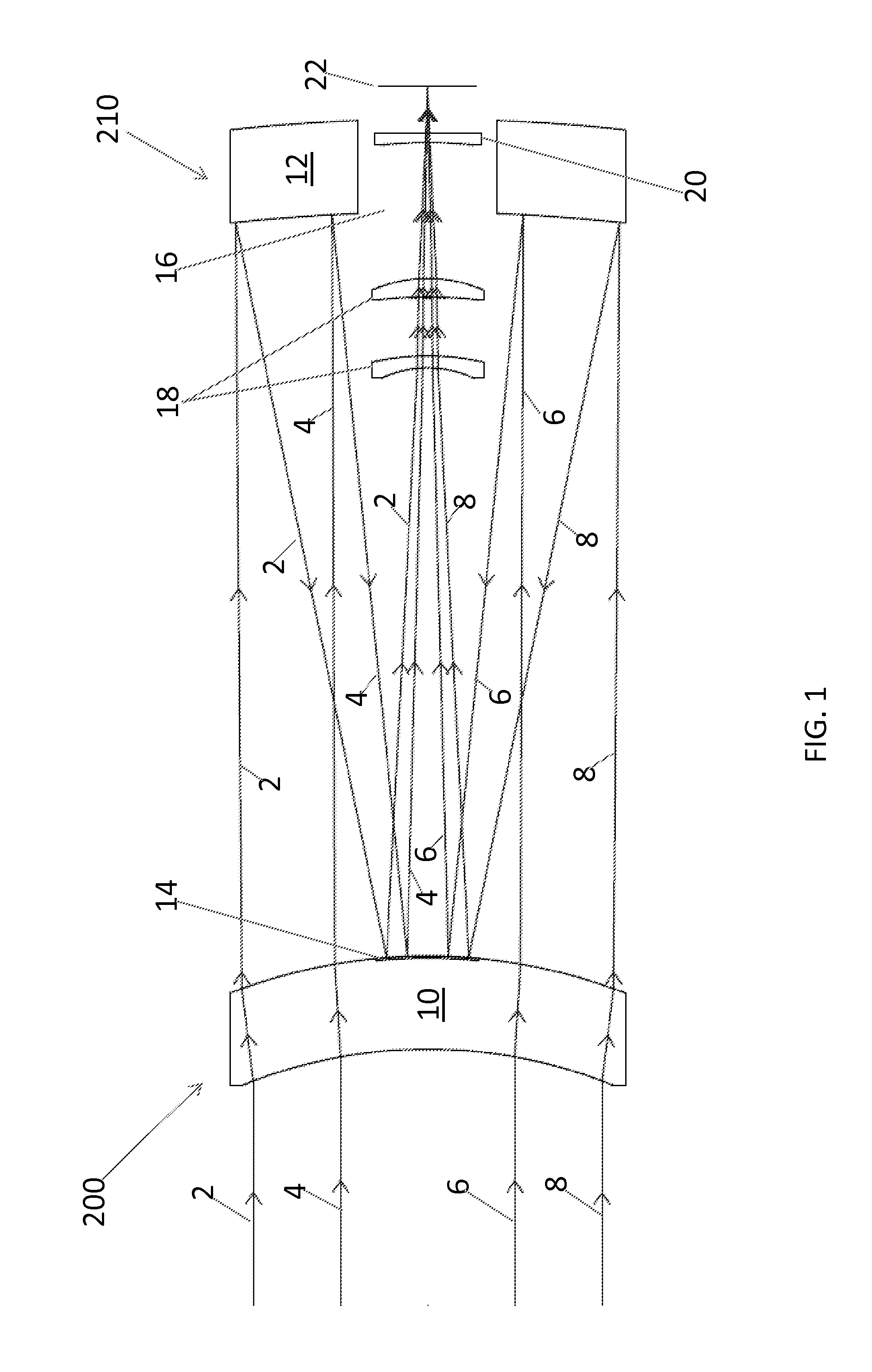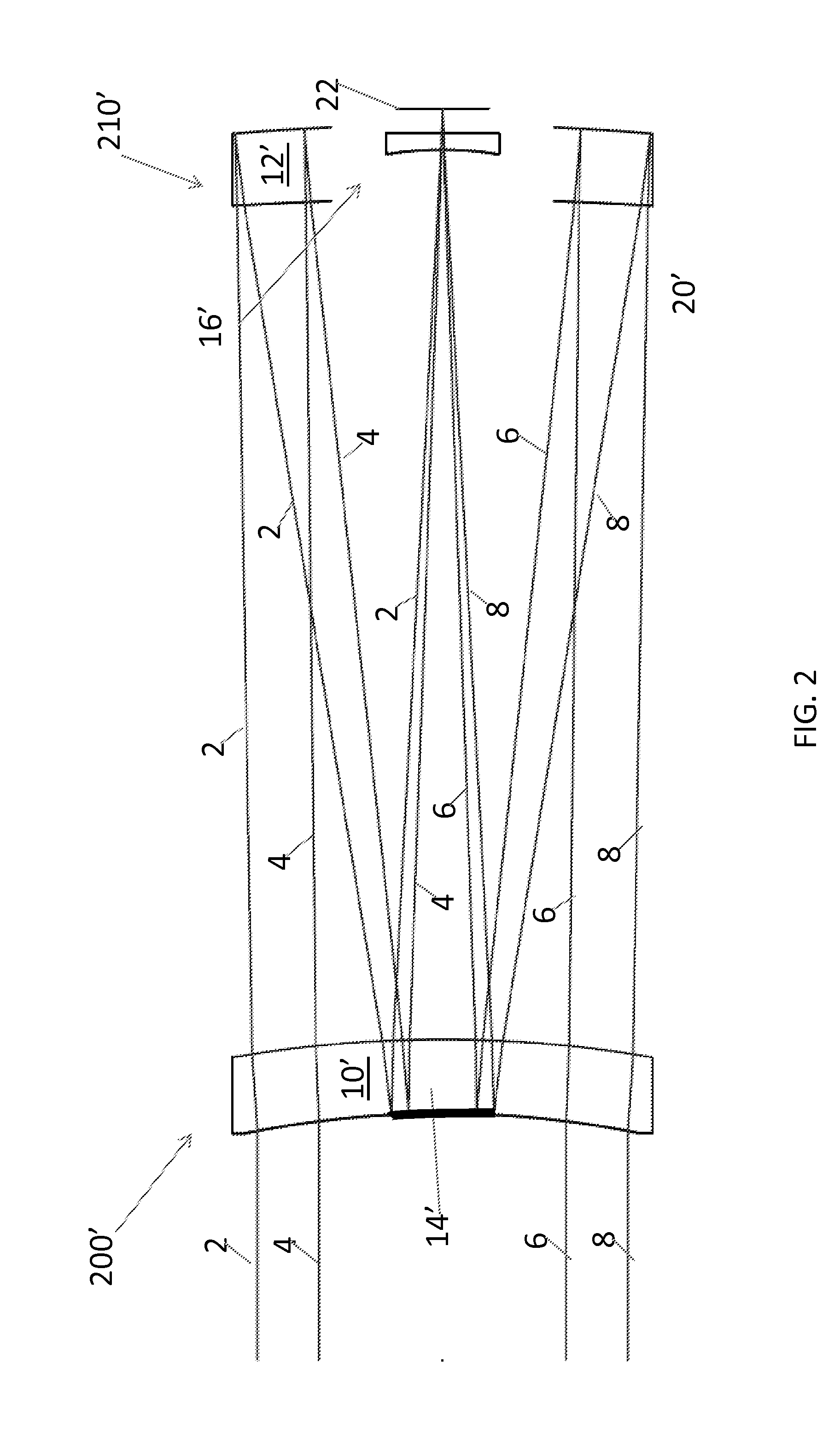Telescope and telescope array for use in spacecraft
a technology for spacecraft and telescopes, applied in the field of telescopes, can solve the problems of inability inability to adjust the telescope to meet the requirements of different nanosatellite applications, etc., and achieve the effect of convenient and inexpensive customization
- Summary
- Abstract
- Description
- Claims
- Application Information
AI Technical Summary
Benefits of technology
Problems solved by technology
Method used
Image
Examples
Embodiment Construction
[0015]In all the Figures, each element is always identified by the same reference numeral, and corresponding elements are identified using primed reference numerals. The Figures are not to scale; dimensions have been enlarged or reduced for clarity.
[0016]FIG. 1 shows a schematic representation of how a conventional catadioptric Maksutov-Cassegrain optical telescope operates in the wavelength range of 400 nm to 1000 nm. Incoming rays 2, 4, 6, and 8 enter the entrance end 200 of the telescope through its spherical meniscus corrector lens 10, which is made of optical glass and disperses them radially outwardly. They then strike the spherical reflective surface of the primary mirror 12 (which has an aperture 16 in its center) and are reflected back toward the corrector lens 10, where they are made incident upon a secondary “spot” mirror 14. After reflection from the secondary spot mirror 14, the rays 2, 4, 6, and 8 are directed towards a circular aperture 16 that is located in the cente...
PUM
 Login to View More
Login to View More Abstract
Description
Claims
Application Information
 Login to View More
Login to View More - R&D
- Intellectual Property
- Life Sciences
- Materials
- Tech Scout
- Unparalleled Data Quality
- Higher Quality Content
- 60% Fewer Hallucinations
Browse by: Latest US Patents, China's latest patents, Technical Efficacy Thesaurus, Application Domain, Technology Topic, Popular Technical Reports.
© 2025 PatSnap. All rights reserved.Legal|Privacy policy|Modern Slavery Act Transparency Statement|Sitemap|About US| Contact US: help@patsnap.com



